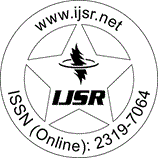Downloads: 2
India | Physiology | Volume 14 Issue 9, September 2025 | Pages: 1483 - 1488
Different Exercises, Glucose Homeostasis and Ayurveda Perspectives
Abstract: Glucose homeostasis is tightly regulated by hormonal and cellular pathways, particularly insulin-mediated glucose uptake, hepatic glucose output, and skeletal muscle metabolism. Physical exercise induces robust physiological adaptations that enhance insulin sensitivity through AMPK and IRS-Akt signaling, GLUT4 translocation, mitochondrial biogenesis, and improved ?-cell function. Aerobic, resistance, and high-intensity interval training (HIIT) differentially modulate these mechanisms, with combined training showing superior effects on glycemic indices and metabolic flexibility. Ayurvedic physiology conceptualizes glucose imbalance as dysfunction of Agni, Meda Dhatu (adipose tissue), and obstructed Srotas (transport pathways). Interventions like Vyayama (exercise), Swedana (sudation), and Udvartana enhance tissue perfusion, reduce oxidative stress, and improve cellular glucose handling-paralleling established physiological mechanisms. Understanding these exercise-induced adaptations through both modern and traditional lenses reveals converging pathways in metabolic regulation. An integrated, physiology-based approach may enhance therapeutic strategies for insulin resistance and type 2 diabetes.
Keywords: Glucose homeostasis, Insulin signaling, Exercise physiology, AMPK, GLUT4, Mitochondria, Ayurveda, Meda Dhatu, Agni
How to Cite?: Dr. Rutuja Zende, Dr. Prasad Pandkar, "Different Exercises, Glucose Homeostasis and Ayurveda Perspectives", Volume 14 Issue 9, September 2025, International Journal of Science and Research (IJSR), Pages: 1483-1488, https://www.ijsr.net/getabstract.php?paperid=SR25927193437, DOI: https://dx.doi.org/10.21275/SR25927193437
